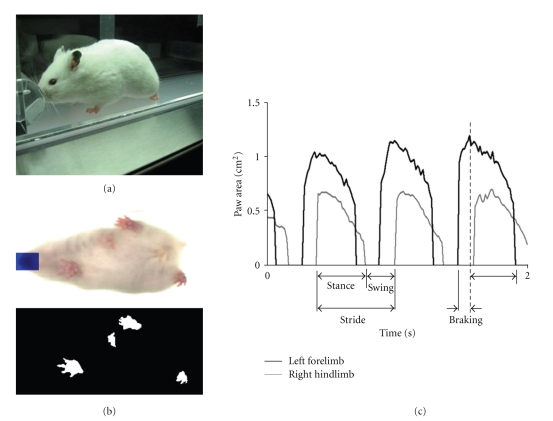Figure 1.
(a) Lateral view of a 9-month-old TO-2 dystrophic hamster walking on DigiGait transparent treadmill belt. The animal walks within an adjustable polycarbonate housing to accommodate a range of animal sizes walking or running at a range of walking speeds (0 to 100 cm/s). (b) Individual color image (top) from a digital video recording of the underside of a walking hamster, representing one instance in time. A digital mask was placed over the snout, based on the symmetry and direction of the animal, to prevent the snout from being misinterpreted as a paw. (Bottom) DigiGait software subtracts from each image the pixels that do not match the color of the paws and converts the images to binary, resulting in digital paw prints of the walking hamster. (c) Representative dynamic gait signals of the left forelimb and right hindlimb of a hamster walking at a speed of 16 cm/s. Durations of stance, swing, and stride are indicated for the right hindlimb. Durations of propulsion and braking are indicated for the left forelimb.

